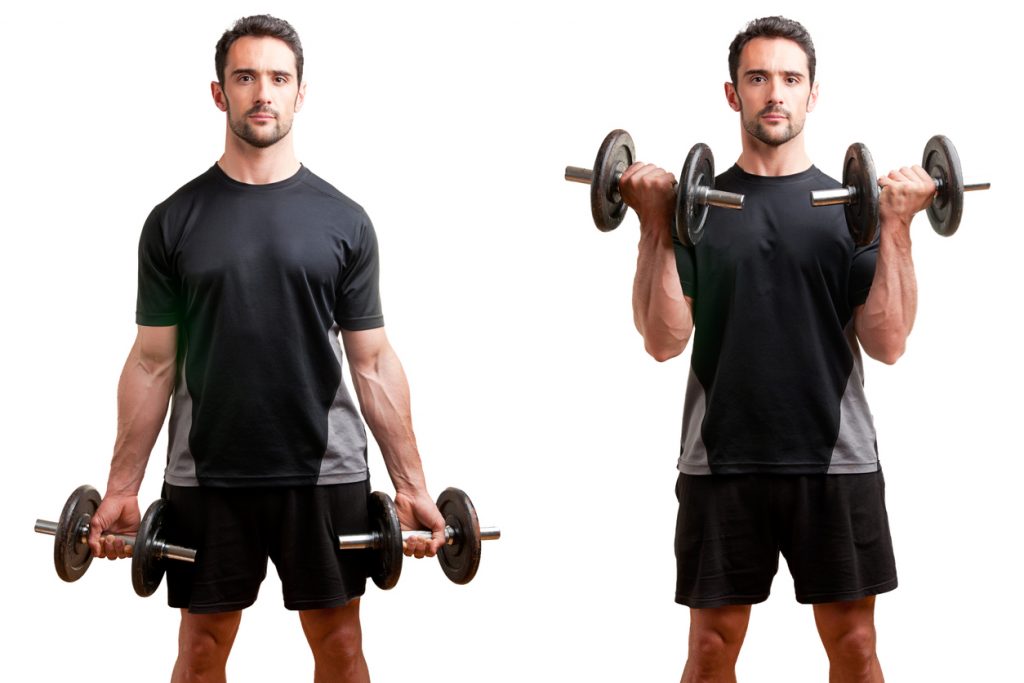Summary
There are three distinct types of muscular contraction: concentric, isometric, and eccentric. The realm of bodybuilding and strength training is where you’ll hear it the most, but it’s also utilized in other fields. These basic contraction regimens outline the actions to be done while training a muscle or a group of muscles. It is crucial to know how to discern between them in order to pick the correct sort of exercise for a certain portion of the body.
What exactly is a concentric contraction?
Concentric shortening is also known as positive phase. It’s what happens, for instance, when you flex your muscle to lift a weight. When building muscle, the concentric contraction is what you should focus on doing. When a muscle contracts, it causes a certain motion. The force generated by a muscle grows as its length shortens. By drawing their free ends closer together, the muscles in question produce tension.
When performing a pull-up on a high bar, for instance, the user must bend their elbows and flex their biceps. At the same time, the affected muscle contracts and shortens. Concentric contraction describes this phenomenon. A concentric action is also performed when a dumbbell is lifted from the bottom position to the shoulder. Another example of a concentric contraction is the upward movement of the bar during a squat, performed while standing.
In strength training, the concentric motion is the active one, the one that really engages the targeted muscle(s) or muscle(s). It’s great for a variety of reasons, but notably for helping athletes gain muscle and perform better. The athlete achieves a strength gain after doing five concentric repetitions.
Muscle volume increases at the ten-repetition mark, with further growth in the size of muscle fibers and connective tissue following. At fifteen concentric repetitions, the athlete will have increased endurance and muscle tone.
Principles and advantages of eccentric contraction
An eccentric contraction can be thought of as the polar opposite of a concentric contraction. It is also termed the negative period in the discipline of bodybuilding.
When a muscle contracts during an eccentric movement, it is pulling away from its insertion place. At this point in the workout, the muscles are responsible for holding the weight. The athlete’s attempt to maintain control of the weight reduces the rate of muscle or muscle group stretching.
When you go for a casual run, your leg muscles use eccentric contraction to fight against gravity. In order to avoid injury during strength training, an athlete performing a bench press must maintain control of the load.
Strength training relies heavily on the eccentric contraction. It allows for a wider variety of fibers to be requested. It is the combination of eccentric contraction with concentric movement that leads to an increase in muscle mass. It might be challenging to perform eccentric contraction, especially when working with large weights. It might cause significant muscle discomfort and a lengthy recovery time for the athlete.
Isometric contraction is defined as.
To accomplish an isometric contraction, one must remain in a fixed position while exerting force. When performing an isometric contraction, the athlete does not move while the muscle fibers are being worked, in contrast to concentric and eccentric motions. When performing an isometric contraction, the levers and anchor points must remain in place. Even if the athlete doesn’t move, the contraction will be rather strong.
In an isometric contraction, the muscle does not move at all. It doesn’t need any specialized facilities or tools to execute. To build a muscle, the effort consists solely of keeping the posture clenched and being immobile for a specific time.
As a result, it’s great for athletes of all skill levels and may be used in a variety of situations. You may strengthen your muscles with isometric contraction without putting undue stress on your tendons and joints. It’s scalable, so athletes of any skill level may benefit from it.
The downside of isometric contraction is that it cannot be employed for long. Isometric exercises should last no longer than six minutes at a time and twenty minutes altogether. You need to combine it with another type of contraction (concentric, eccentric, plyometric, etc.) for best effects.
There is a wide variety of isometric muscle exercises that may be done anyplace. The sheathing routines are the most well-known. When performing the chair exercise, you will take on a position similar to a chair and hold it for a set amount of time. Once the athlete’s legs have formed a right angle, they should stay that way for as long as feasible. The athlete can also execute sit-ups, an activity that targets the abdominal muscles, by placing the elbows on the floor and lifting the heels off the ground. By tightening your ab muscles, you attempt to maintain this posture for as long as possible. To prevent muscular fatigue, it’s important to rest in between sets of exercises.
Contraction exercises are required to effectively target and strengthen every muscle and muscle group. There is usually a period of eccentric contraction after a concentric one. On the other hand, isometric contractions don’t require any additional equipment and may be done anywhere. However, a comprehensive strength training program should include all three types of exercises to ensure that every muscle group is being targeted. It is up to each athlete to prioritise one contraction above another, based on the muscles they want to work and the outcomes they want to attain.
